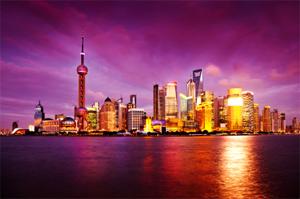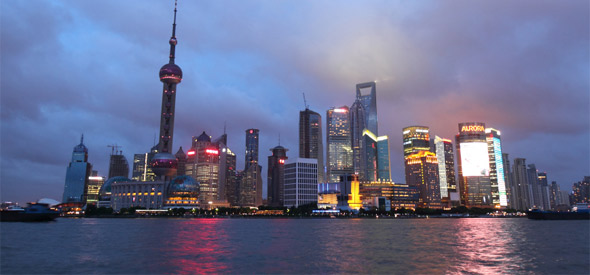
China business travel is expected to grow by double digits for the next year and add nearly $130 billion in new spend by 2014, according to Global Business Travel Forecast 2011 from American Express Business Travel (Sept 2010).
Beijing, Shanghai and Guangzhou are the first-tier, power centers and focal points of China’s dramatic growth. But the real news these days is the boom in China’s second-tier cities for business travel.
Growth in investment, property prices and consumer affluence is now outpacing those of the first-tier locations. Cities like Hangzhou, Chongqing, Shenzhen, Tianjin and Chengdu are experiencing development. And even finding luxurious hotels in Shenzhen, for example, was unthinkable 20, even 10 years ago.
This has also contributed significantly to China’s recent status as the world’s third most visited country, according to the UN World Tourism Organization. So it’s entirely reasonable to expect that you may find yourself in one of these growing capitals.
The question is, given China’s dynamic urban growth, what should business travelers know before visiting?
China’s Emerging Cities: Opportunity
Dust and the noise of constant construction are signs of expansion, and there’s an incredible amount of this in China’s second-tier markets. These cities are determined to become world class, and that’s being driven in part by an aspiration for a better lifestyle: Greater China is expected to be the world’s largest market for luxury goods over the next decade.
All of this translates to great news for China’s hospitality industry, and hotel room rates are beginning to reflect the potential. Industry data shows that in 2010 hotel rates in China’s second-tier cities outpaced the first-tier markets. Chengdu in southwest China experienced a 21 percent price increase. And online travel site eLong, an established player in the Chinese market, reported a significant trend in hotel bookings in second- and third-tier cities.
At Marco Polo Hotels, we are developing mixed-use properties in China’s second-tier markets that include residential, retail and hotel facilities. We have seven in the pipeline: Changsha, Changzhou, Chengdu, Foshan, Suzhou, Wuxi and Chongqing.
China’s Challenge: Labor
It sounds like an oxymoron. With 1.4 billion people, shouldn’t China have more than enough workers?
The sad truth is, no. This is a time of dramatic growth, and the demand for quality staff far outstrips supply. Skilled labor shortages are serious as wages and inflation rise. Industries such as investment banking, retail and hotels are competing for trained, English-speaking staff.
What does this mean for international business and international business travelers in China’s second-tier cities? Employee retention is going to be a major challenge. Training and engaging them is key.
China’s People: Diverse
Some expect that China is a homogenous country, but the truth is that – depending on the source – there are 56 to 61 ethnic groups in China, with the Han group, at 92 per cent of the population, the most recognizable to the rest of the world.
The country is an amalgamation of cultures, with different languages, dialects and traditions. Although Mandarin is the official language, don’t assume that it will be spoken wherever you go. Cantonese is prevalent in the Guangdong province. Min Nan is primarily spoken in Fujian.
Recognizing this diversity, with an appreciation of unique local cultures and traditions, is important as international business travelers access these growing economic regions.
China’s Internet: Unique
Get ready for a whole new set of rules for the web and social media because you will need an approach customized to China. Access to Facebook, Yahoo!, Twitter, Tumblr and other sites you may use on a daily basis is restricted. China is also one of only five geographies where Google does not capture more than 50% of the search market.
Does this mean that the Chinese are not online? Hardly: The Internet penetration rate is 450 million, less than a third of the population. China has its own versions of social networking sites such as RenRen and Sina.
Microblogging in the manner of Twitter has also exploded in popularity. In China, a microblog is called weibo (why-bow). Foursquare has also inspired a local version called Jiepang, where players check into locations.
China’s Values: Traditional and Modern
When I last visited Wuhan, I saw a huge billboard on a construction site showing Hong Kong’s famous cityscape and the headline “Wuhan’s Dream.”
The billboard just tells one part of the story. China’s second-tier cities are hungry for the good life. They want to travel, dine, shop and live a more extravagant lifestyle – but on their own terms.
You may see incredible wealth, yet Chinese values still underpin modern aspirations in second-tier cites. Values that emphasize pride and respect for society, group opinion/acceptance over individualism and the importance of relationships to make things work in a country where systems and processes are still being established.
Although Wuhan may look towards cities like Hong Kong as a model, it will still remain Wuhan – with its own unique identity, a firm place on the world stage. A force to be reckoned with, on its own. This is a constant aspiration of China’s second-tier cities and they have the economic horsepower to carry this through.














